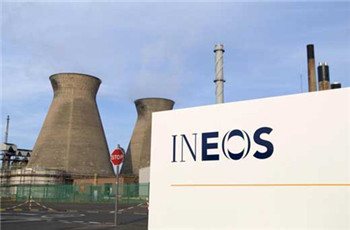
Ineos, the European refining and petrochemicals company, is close to reaching a settlement with Sinopec, after threatening to take the Chinese state-owned oil group to court over an intellectual property dispute.
欧жҙІзӮјжІ№е’ҢзҹіжІ№еҢ–е·ҘдјҒдёҡиӢұеҠӣеЈ«(Ineos)жҺҘиҝ‘дёҺдёӯзҹіеҢ–(Sinopec)иҫҫжҲҗе’Ңи§ЈгҖӮжӯӨеүҚиҜҘе…¬еҸёжӣҫеӣ дёҖиө·зҹҘиҜҶдә§жқғзә зә·еЁҒиғҒиө·иҜүиҝҷ家дёӯеӣҪеӣҪжңүзҹіжІ№йӣҶеӣўгҖӮ
Jim Ratcliffe, Ineos chief executive, said yesterday that the two companies were close to a settlement вҖңbased on a thorough discussion of the subject, based on a good relationship, a good understanding, and I think very soon weвҖҷll see a very good solution coming out of thatвҖқ.
иӢұеҠӣеЈ«йҰ–еёӯжү§иЎҢе®ҳеҗүе§ҶжӢүзү№е…ӢйҮҢеӨ«(Jim Ratcliffe)жҳЁеӨ©иЎЁзӨәпјҢдёӨ家公еҸёвҖңеңЁе…Ёйқўи®Ёи®әзӣёе…ій—®йўҳзҡ„еҹәзЎҖдёҠпјҢеңЁиүҜеҘҪзҡ„зӣёдә’е…ізі»е’Ңзӣёдә’зҗҶи§Јзҡ„еҹәзЎҖдёҠпјҢвҖқжҺҘиҝ‘иҫҫжҲҗе’Ңи§ЈпјҢвҖңжҲ‘и®ӨдёәеҫҲеҝ«жҲ‘们е°ұдјҡзңӢеҲ°з”ұжӯӨеҫ—еҮәйқһеёёеҘҪзҡ„и§ЈеҶіж–№жЎҲвҖқгҖӮ
Last year, Ineos had announced that it would take an intellectual property complaint against Sinopec to a Chinese court, claiming that Sinopec had built a new acrylonitrile plant without paying technology licensing fees due to Ineos. Acrylonitrile is an ingredient in hard plastics and carbon fibre, used for everything from Lego bricks to the Boeing Dreamliner.
еҺ»е№ҙпјҢиӢұеҠӣеЈ«жӣҫе®Јеёғе°ҶеңЁдёӯеӣҪжі•еәӯжҸҗиө·еҜ№дёӯзҹіеҢ–зҡ„зҹҘиҜҶдә§жқғиҜүи®јпјҢеЈ°з§°дёӯзҹіеҢ–е»әйҖ дәҶж–°зҡ„дёҷзғҜи…Ҳе·ҘеҺӮпјҢеҚҙжІЎжңүж”Ҝд»ҳеә”еҗ‘иӢұеҠӣеЈ«ж”Ҝд»ҳзҡ„жҠҖжңҜи®ёеҸҜиҙ№гҖӮдёҷзғҜи…ҲжҳҜзЎ¬еЎ‘ж–ҷе’Ңзўізҙ зәӨз»ҙзҡ„з»„еҲҶд№ӢдёҖпјҢз”ЁйҖ”е№ҝжіӣпјҢд»Һд№җй«ҳ(Lego)з§ҜжңЁеҲ°жіўйҹі787жўҰе№»е®ўжңә(Boeing Dreamliner)гҖӮ
IneosвҖҷs planned phenol plant in Nanjing вҖ” also a joint venture with Sinopec вҖ” was put on hold because of the continuing dispute. In the meantime, IneosвҖҷ European rival Cepsa, the second-largest producer of plastic ingredient phenol after Ineos, inaugurated its own $300m plant in eastern China in April.
з”ұдәҺиҝҷдёҖдёҚж–ӯжҢҒз»ӯзҡ„дәүз«ҜпјҢиӢұеҠӣеЈ«еҺҹи®ЎеҲ’еңЁеҚ—дә¬дёҺдёӯзҹіеҢ–еҗҲиө„е»әйҖ зҡ„иӢҜй…ҡе·ҘеҺӮд№ҹиў«жҗҒзҪ®гҖӮдёҺжӯӨеҗҢж—¶пјҢиӢұеҠӣеЈ«зҡ„欧жҙІз«һдәүеҜ№жүӢиөӣеҖҚйЈ’(CEPSA)д№ҹдәҺд»Ҡе№ҙ4жңҲеңЁеҚҺдёңеҗҜеҠЁдәҶе…¶3дәҝзҫҺе…ғзҡ„еҢ–е·ҘеҺӮгҖӮиөӣеҖҚйЈ’жҳҜ欧жҙІд»…ж¬ЎдәҺиӢұеҠӣеЈ«зҡ„第дәҢеӨ§иӢҜй…ҡпјҲеЎ‘ж–ҷз»„еҲҶд№ӢдёҖпјүз”ҹдә§е•ҶгҖӮ
CepsaвҖҷs plant will provide phenol that previously had to be imported into China, leaving the country self-sufficient in the ingredient, according to JosГ© Manuel MartГӯnez, Cepsa senior vice-president for petrochemicals.
ж №жҚ®иөӣеҖҚйЈ’зҹіеҢ–й«ҳзә§еүҜжҖ»иЈҒдҪ•еЎһжӣјеҠӘеҹғе°”ж° дёҒеҶ…ж–Ҝ(JosГ© Manuel MartГӯnez)зҡ„иҜҙжі•пјҢиөӣеҖҚйЈ’зҡ„е·ҘеҺӮе°Ҷдҫӣеә”жӯӨеүҚдёӯеӣҪеҝ…йЎ»иҝӣеҸЈзҡ„иӢҜй…ҡпјҢи®©дёӯеӣҪе®һзҺ°иҝҷз§Қз»„еҲҶзҡ„иҮӘз»ҷиҮӘи¶ігҖӮ
Putting the Ineos plant вҖңon the back burnerвҖқ was вҖңobviously a very sensible thing to doвҖқ, Mr Ratcliffe said. He explained that growing petrochemical capacity in China and Asia would add to pressure on European producers by shifting low-cost Middle Eastern production into the European market.
жӢүзү№е…ӢйҮҢеӨ«иЎЁзӨәпјҢе°ҶиӢұеҠӣеЈ«зҡ„еҗҲиө„еҺӮйЎ№зӣ®вҖңжҡӮдё”зј“дёҖзј“вҖқпјҢвҖңжҳҫ然жҳҜдёҖ件еҚҒеҲҶжҳҺжҷәзҡ„дәӢжғ…вҖқгҖӮд»–и§ЈйҮҠиҜҙпјҢдёӯеӣҪд№ғиҮіж•ҙдёӘдәҡжҙІж—Ҙжёҗеўһй•ҝзҡ„зҹіеҢ–дә§иғҪпјҢдјҡеҜјиҮҙдҪҺжҲҗжң¬зҡ„дёӯдёңдә§е“ҒиҪ¬еҗ‘欧жҙІеёӮеңәпјҢд»ҺиҖҢдёә欧жҙІз”ҹдә§е•ҶеўһеҠ еҺӢеҠӣгҖӮ
Some of AsiaвҖҷs growing surplus could also spill into Europe, he added, while cheap shale gas in the US has also revived the competitiveness of the countryвҖҷs producers.
д»–иЎҘе……иҜҙпјҢдәҡжҙІдёҚж–ӯеўһеҠ зҡ„иҝҮеү©дә§е“ҒдёӯпјҢйғЁеҲҶд№ҹеҸҜиғҪеҗ‘欧жҙІжү©ж•ЈгҖӮдёҺжӯӨеҗҢж—¶пјҢзҫҺеӣҪе»үд»·зҡ„йЎөеІ©ж°”д№ҹеӨҚиӢҸдәҶзҫҺеӣҪз”ҹдә§е•Ҷзҡ„з«һдәүеҠӣгҖӮ
вҖңEuropeвҖҷs got quite a lot to worry about in my view,вҖқ Mr Ratcliffe warned. вҖңItвҖҷs not just Asian capacity expansion.вҖқ
жӢүзү№е…ӢйҮҢеӨ«иӯҰе‘ҠиҜҙпјҡвҖңеңЁжҲ‘зңӢжқҘпјҢ欧жҙІйңҖиҰҒжӢ…еҝғи®ёеӨҡдәӢжғ…гҖӮдёҚд»…д»…жҳҜдәҡжҙІдә§иғҪжү©еӨ§зҡ„й—®йўҳгҖӮвҖқ
To stay competitive, Ineos is tapping into the same low-cost gas from North America.
дёәдҝқжҢҒз«һдәүеҠӣпјҢиӢұеҠӣеЈ«д№ҹеңЁеҲ©з”ЁеҢ—зҫҺе»үд»·зҡ„еӨ©з„¶ж°”гҖӮ
Yesterday, Mr Ratcliffe launched two new ships in Shanghai re intended to lower IneosвҖҷ feedstock costs at its European plants by shipping ethane from the US east coast.
жҳЁеӨ©пјҢжӢүзү№е…ӢйҮҢеӨ«еңЁдёҠжө·дёәдёӨиүҳж–°иҲ№дёҫиЎҢдәҶдёӢж°ҙд»ӘејҸгҖӮиҝҷдёӨиүҳж–°иҲ№е°Ҷд»ҺзҫҺеӣҪдёңжө·еІёиҝҗиҫ“д№ҷзғ·пјҢд»ҺиҖҢйҷҚдҪҺиӢұеҠӣ士欧жҙІе·ҘеҺӮзҡ„еҺҹж–ҷжҲҗжң¬гҖӮ
Ineos plans a fleet of eight ships to transport relatively cheap shale gas to its plants in Norway and Grangemouth, Scotland.
иӢұеҠӣеЈ«и®ЎеҲ’жү“йҖ дёҖж”Ҝз”ұе…«иүҳиҲ№з»„жҲҗзҡ„иҲ№йҳҹпјҢе°ҶзӣёеҜ№е»үд»·зҡ„йЎөеІ©ж°”иҝҗеҫҖе…¶дҪҚдәҺжҢӘеЁҒе’ҢиӢҸж је…°ж је…°иҺ«ж–Ҝзҡ„е·ҘеҺӮгҖӮ
The gas will be piped from the Marcellus formation in western Pennsylvania to a terminal near Philadelphia, then shipped across the Atlantic, as part of a plan costing the company $1bn.
иҝҷдәӣйЎөеІ©ж°”е°Ҷд»Һе®ҫеӨ•жі•е°јдәҡе·һиҘҝйғЁзҡ„马иөӣеҚўж–ҜйЎөеІ©еұӮпјҢз”Ёз®ЎйҒ“иҝҗеҫҖиҙ№еҹҺйҷ„иҝ‘зҡ„дёҖдёӘз ҒеӨҙпјҢеҶҚиЈ…иҲ№жЁӘи·ЁеӨ§иҘҝжҙӢгҖӮиӢұеҠӣеЈ«жҖ»е…ұе°ҶдёәиҜҘи®ЎеҲ’жҠ•е…Ҙ10дәҝзҫҺе…ғгҖӮ












